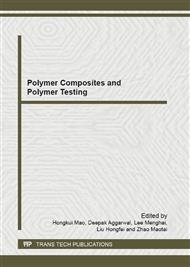[1]
F. Rodriguez-Reinoso, M. Molina-Sabio and J. C. Gonzalez: Carbon, Vol. 39(2001), p.776.
Google Scholar
[2]
R. M. Celis, C. Hermosin and J. Cornejo: Environ. Sci. Technol., Vol. 34(2000), p.4593.
Google Scholar
[3]
R. Giora, T. Dvora and S. Carina: Apply Clay Science, Vol. 20(2002), p.273.
Google Scholar
[4]
I. U. Halil and E. Baki: Apply Clay Science, Vol. 12(1998), p.419.
Google Scholar
[5]
J. C. Gonzalez and M. Molina: Applied Clay Science, Vol. 20(2001), p.111.
Google Scholar
[6]
A. Sun, J. B. Caillerie and J. J. Fripiat: Microporous Materials, Vol. 5(1995), p.135.
Google Scholar
[7]
A. Steudel, L.F. Batenburg, H.R. Fischer, P.G. Weidler and K. Emmerich: Applied Clay Science, Vol. 44(2009), p.95.
DOI: 10.1016/j.clay.2009.02.001
Google Scholar
[8]
E. Sabah: Journal of Colloid and Interface Science, Vol. 310(2007), p.1.
Google Scholar
[9]
I. Dekany, L. Turi, A. Fonseca and J. B. Nagy: Applied Clay Science, Vol. 14(1999), p.141.
Google Scholar
[10]
E. Sabah, M. Turan and M. S. Celik: Water Research, Vol. 36(2002), p.3957.
Google Scholar
[11]
J. L. Valentin, M. A. Lopez-Manchado, A. Rodriguez, P. Posadas and L. Ibarra: Applied Clay Science, Vol. 36(2007), p.245.
Google Scholar
[12]
A. A. Goktas, Z. Misirli and T. Baykara: Ceramics International, Vol. 23(1997), p.305.
Google Scholar
[13]
A. Kilislioglu and G. Aras: Applied Radiation and Isotopes, Vol. 68(2010), p. (2016).
Google Scholar
[14]
A. Torro-Palau, J. C. Fernandez-Garcia, A. C. Orgiles-Barcelo, M. M. Pastor-Blas and J. M. Martin-Martinez: International Journal of Adhesion and Adhesives, Vol. 17(1997), p.111.
DOI: 10.1163/156856197x00345
Google Scholar
[15]
M. Cinar, G. Ersever, O. Şahbaz and M. S. Çelik: Applied Clay Science, Vol. 53(2011), p.386.
Google Scholar
[16]
A. S. Ozcan and O. Gok: Journal of Molecular Structure, Vol. 1007(2012), p.36.
Google Scholar
[17]
L. I. Vico and S. G. Acebal: Applied Clay Science, Vol. 33(2006), p.142.
Google Scholar
[18]
M. Villamiel, N. Corzo, M. I. Foda, F. Montes and A. Olano: Food Chemistry, Vol. 76(2002), p.7.
Google Scholar
[19]
M. A. Fuente, M. Juarez, D. Rafael and A. Olano: Food Chemistry, Vol. 66(1999), p.301.
Google Scholar
[20]
V. P. Samusikov: Russian Geology and Geophysics, Vol. 51(2010), p.266.
Google Scholar
[21]
R. O. Rye: Chemical Geology, Vol. 215(2005), p.5.
Google Scholar
[22]
K. P. Liu, P. F. Lu, H. Gong and J. E. Zhou: Mining R& D, Vol. 24(2004), p.25.
Google Scholar
[23]
H. Yin, J. S. Liang, Q. G. Tang, G. C. Liang, L. J. Wang and G. S. Li: J. Synth. Cryst, Vol. 34(2005), p.519.
Google Scholar
[24]
M. Clement and E. Huwald: Journal of Mineral Processing, Vol. 5(1978), p.199.
Google Scholar
[25]
J. Cornejo and M C Hermosin: Clay Minerals, Vol. 23(1988), p.39.
Google Scholar
[26]
M. Oja and R. Tuunila: Developments in Mineral Processing, Vol. 13(2000), p.64.
Google Scholar


